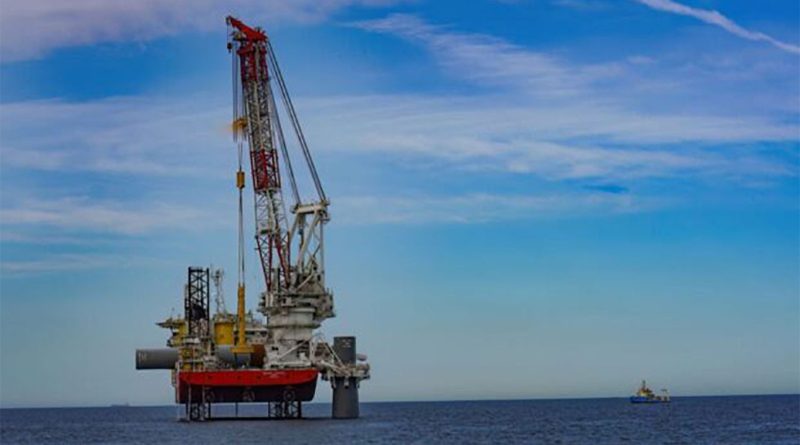Record-Setting Monopile Installed at £4bn East Anglia Wind Farm
Subscribe to our free newsletter today to keep up to date with the latest construction and civil engineering news.
The East Anglia THREE offshore wind farm project has begun with an impressive milestone: the successful installation of a record-breaking monopile foundation. Developed by ScottishPower Renewables, this £4 billion endeavor represents a major step forward in the United Kingdom’s renewable energy ambitions.
The placement of the first monopile signals not only the physical start of construction but also the advancement of offshore engineering capabilities. As part of the broader East Anglia Hub, the project is poised to become a critical contributor to the country’s clean energy portfolio.
Details of the record-breaking monopile
Installed using the jack-up vessel Seaway Ventus, the monopile foundation sets new standards for offshore wind infrastructure. Standing at 83.89 meters and measuring 10.6 meters in diameter, the structure weighs approximately 1,800 tonnes. The feat highlights substantial advancements in design and marine construction techniques, allowing the sector to accommodate larger turbines and deeper water projects.
Previous industry records have now been surpassed, positioning East Anglia THREE at the forefront of offshore wind innovation. The use of advanced technology and precision engineering ensured the successful placement of the foundation in the challenging conditions of the North Sea.
East Anglia THREE’s impact on renewable energy
Once completed, East Anglia THREE is expected to deliver 1.4 gigawatts of renewable electricity, enough to power more than 1.3 million homes. As one of the largest offshore wind developments in the UK, it is a key element of ScottishPower’s broader East Anglia Hub initiative. This hub will significantly contribute to the UK’s goal of achieving net-zero emissions by 2050.
The installation of the massive monopile represents more than just a record; it reflects a wider trend toward engineering larger and more efficient offshore wind structures. As turbine technology evolves, foundations must adapt to support increased loads and withstand harsher marine environments. Innovations include improved steel fabrication methods, enhanced vessel capabilities, and more efficient installation processes.
These advancements lower the levelized cost of energy for offshore wind and make the sector more attractive to investors. East Anglia THREE stands as proof that with strategic investment and technological innovation, offshore wind can continue to scale to meet future energy demands.
The early success of East Anglia THREE sets a new benchmark for offshore wind development globally. By pushing the boundaries of what is technically possible, the project highlights how innovation and collaboration can drive the sector forward.
Sources:
